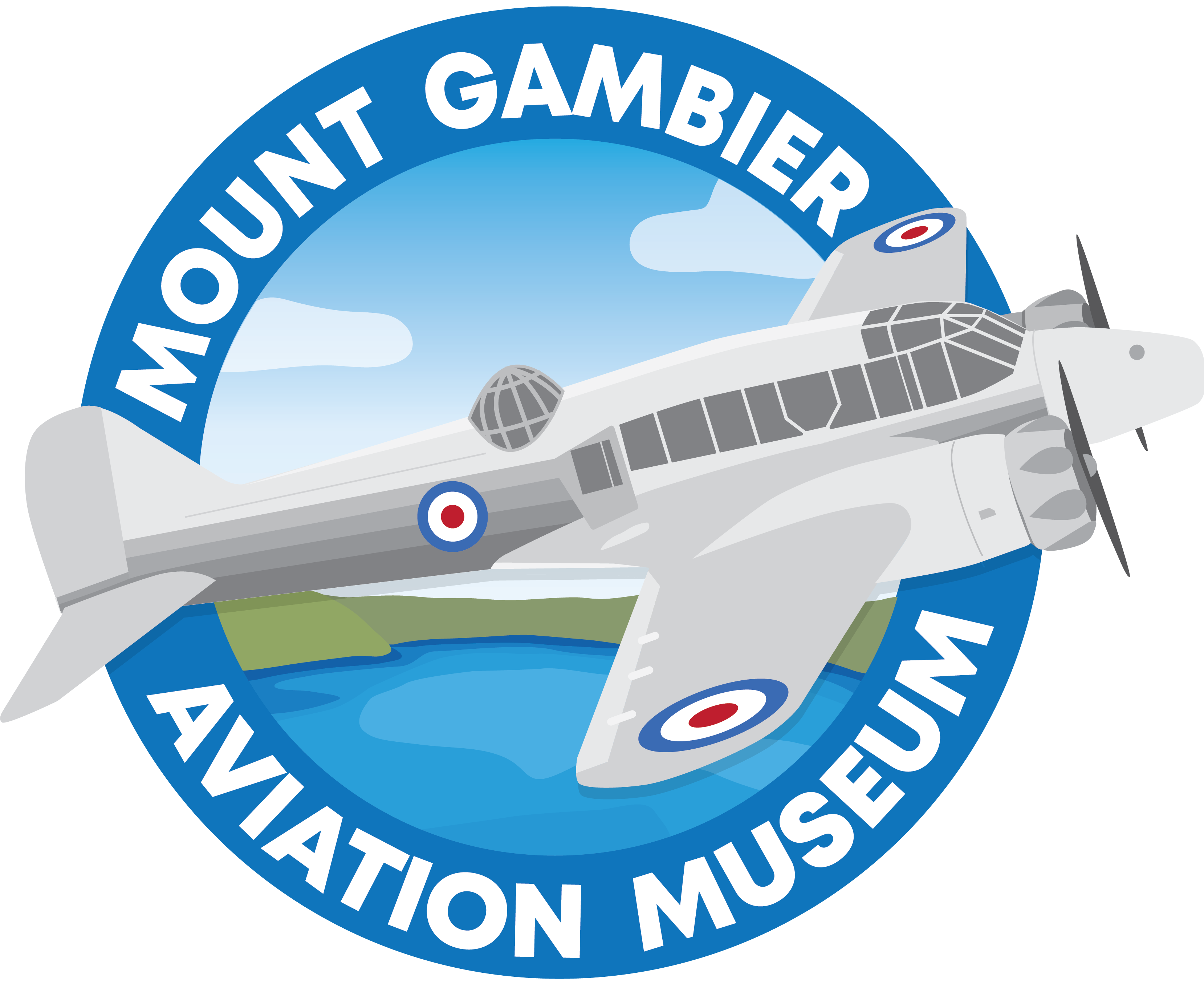Mount Gambier Airport has been located at its current location since 1 July 1936. It was constructed by local aviation pioneers Messrs H.S. May and S.C. Davis and operated as a civil airfield with regular flights to Adelaide and Melbourne until 1939 when the Royal Australian Air Force assumed control of the facility to establish No 2 Air Observers School (AOS), RAAF Mount Gambier.
The No 2 AOS was officially formed on the 6th February 1941 under the command of Squadron Leader R. Shaw. The first Avro Anson aircraft arrived in Mount Gambier on the 25th of February followed closely by the first intake of trainees on the 8th of March 1941. During May 1941 general recruit training commenced at No 2 as well as aircrew training. In March 1942 the aerodrome became home to the 73rd Reserve squadron and in September 1943, a detachment from 67th Squadron arrived tasked with operational duties to seaward. Their role was to monitor the sea and coastline for evidence of the presence of enemy German and Japanese submarines.
During the duration of the war, there were many distractions at No 2 AOS including a detachments to other Nhill airfield to help make up the training hours shortfall (due mostly to the poor weather at Mount Gambier), carrying out bushfire patrols during the summer months, moving the runways to adjacent paddocks while the main sealed runways were updated and assisting in the search for explosions found off Beachport in February 1944 and hunting for a submarine that had attacked a civilian ship in November of the same year.
Unfortunately during the course of training, accidents and fatalities occurred involving aircrews from No 2 AOS. A total of 27 men were killed while training in aircraft that were based at Mount Gambier. Many others were injured in these incidents and a number of aircraft, particularly Avro Anson’s were destroyed.
During the five years that Mount Gambier served as No 2 Air Observers School RAAF Mount Gambier, over 3300 trainees passed through the courses on offer. At any one time up to 1000 people could be based on site, with over 160 buildings made and utilised to house and support such numbers. A number of these buildings still exist at the airport today, still of which are still being used for their original purpose. Following the end of the war the 1st of January 1946 saw the No 2 AOS closed for good. The RAAF’s Care and Maintenance Unit took over until mid-1947 where the airfield was returned to the Department of Civil Aviation (DOCA).
The runway configuration that was set up during the war, has remained in place until this day. As a result, Mount Gambier is the only regional airport in Australia that has three sealed runways. All runways were sealed in 1946, with the main runway extended in 1956, allowing larger aircraft to utilise Mount Gambier. In February 1954, Mount Gambier airport was the first place in South Australia that Queen Elizabeth visited during her Australian tour.
Since the end of the Second World War, the airport has been an active facility with regular public transport flights still operating to this day being operated by the DOCA. The airport was handed over to the District Council of Mount Gambier (DCG) on 18 June 1989.
Regional Context of Military History
Aside from the activities that took place at the airport while working as an Air Observers School, the airport was also used as a base for maritime surveillance as a result of known enemy submarine and sea mine activity off the coast. Mount Gambier was also a staging base for the American 39th Pursuit Squadron before making their way north to the Pacific Islands. The Mount Gambier racecourse was used by the 3rd Light Horse Battalion Reserves as a training camp.
Other War History Attractions in the Area
The Limestone Coast has a rich and varied military history, particularly from the Second World War. Of particular note are the following:
- No 2 Air Observers School RAAF Mount Gambier.
- Prisoner of War camps at Wandilo and Nangwarry.
- German sea mine at Port MacDonnell.
- German sea mine at Beachport, which resulted in the first two fatalities of WWII on Australian soil as a direct result of enemy action.
- Former Remote Receiving Station located at Mil-Lel, 6 km from Mount Gambier.
- Aircraft revetments at Wandilo.
- Former Radar Station at Robe.
There are also a number of memorials in the surrounding areas dedicated to those who lost their lives while training with the No 2 AOS. These are located at Tantanoola, Mt Cole, Port Fairy and Reedy Creek near Kingston SE.
Also of interest around the area are:
- The local RSL’s comprehensive collection of war memorabilia, including a Leopard Tank, Ferret Scout car and several artillery pieces.
- Vansittart Park’s German Krupp artillery gun from the First World War.
- The National Servicemen’s Park on Ehret Street.
- Former Soldier Settlements at Mount Schank.
- Memorial Walk at Port MacDonnell.

